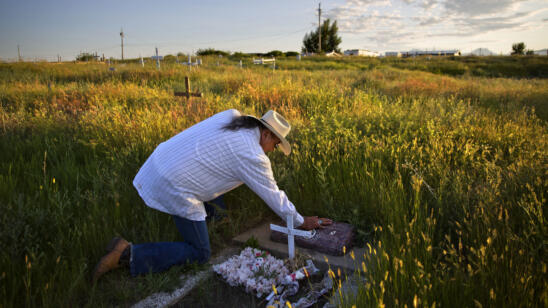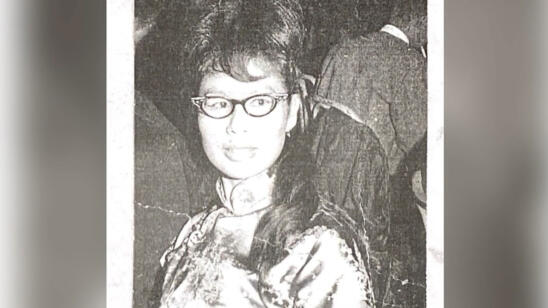Twenty-two-year-old Savanna LaFontaine-Greywind, a member of the Spirit Lake Sioux Tribe, was eight months pregnant when she disappeared in August 2017 from her home in Fargo, North Dakota. Her body was found nine days later, wrapped in plastic and floating in a nearby river.
Her upstairs neighbor, Brooke Crews, pleaded guilty to murdering LaFontaine-Greywind and cutting her unborn child out of her belly. Crews was sentenced to life in prison without parole; Crews’ boyfriend, William Hoehn, was sentenced to 20 years in prison. Savanna’s child, a girl, survived.
Mona Gable, author of the book Searching for Savanna: The Murder of One Native American Woman and the Violence Against the Many, spoke with A&E True Crime about LaFontaine-Greywind’s murder, and how it sparked progress in trying to ensure justice for missing and murdered Native American women and girls.
Why was Savanna targeted by her neighbors?
I think she was targeted because she was Native American. [Crews and Hoehn] didn’t really know Savanna, but they didn’t like her family. A lot of their statements, and a lot of evidence that was collected, showed them to be extremely racist toward Native Americans. If Savanna had been white, I don’t think [Crews] would have had the guts to do this to her. I think she would have been more fearful of the consequences.
[Stream episodes of Killer Cases in the A&E app.]
How was Savanna’s case solved?
There was a huge amount of press on the case, and it ended up getting national attention. Savanna’s family was absolutely persistent in pushing police to find her.
Fargo is kind of a small town, and many people were horrified by what happened to Savanna and her baby. There was a groundswell of support and interest in finding justice for her. There were marches and a lot of awareness. It put a lot of pressure on law enforcement and prosecutors to respond, and they were tenacious.
You first wrote an article about Savanna’s murder for Pacific Standard magazine. How did the book come about?
I started off by doing a lot of research into the case and finding out how pervasive this issue of missing Native American women and girls really was—and had been for generations. I made several trips to Fargo to interview people and I covered Hoehn’s trial.
After I started writing the book in December 2019, I wasn’t able to travel [due to the COVID-19 pandemic], so I had to do a lot of interviews over Zoom with advocates and tribal lawyers. It was challenging, but it worked out really well.
Were there any key interviews?
The one with Savanna’s parents, definitely. They were really shy and reticent of being interviewed, not just by me but by the media in general, for very understandable reasons. This really thrust them in the spotlight in a way that was really hard for them and their family. I kept reaching out and telling them about what I was doing, and the local prosecutor vouched for me.
I did an in-person interview with them and I was just really moved. They were very calm and kind, and very family oriented. They brought [Savanna’s child] with them—that was pretty incredible. I felt very emotional, I could see how much they loved this little girl. The baby is in the custody of her father, but she sees [her grandparents] often.
How are cases of missing Native American girls and women treated by the justice system?
The justice system is very complicated when it comes to prosecuting these cases, because of all the different jurisdiction issues involving federal, state and local law enforcement. Often, even though families are pressing for these crimes to be investigated, they don’t get investigated because there is conflict among different law enforcement agencies over who should be responsible for the investigation.
Can’t law enforcement figure out who should investigate, or is there more at play?
I think they can figure it out. I think they don’t respond to these cases because they dismiss that these women are even missing, sometimes. By the time these cases are investigated, often the evidence has been compromised. Also, part of the problem is tribal police work on reservations that are vast, and they don’t have the technology and the staff to pursue these cases the way they should be.
Is racism a factor in how these cases are treated?
There is definitely a racist element in not pursuing these cases and not considering them important. You can see that in media coverage of when white women go missing, in contrast to when Native American women go missing and the little coverage they get.
[Reporters] don’t have ties to Native American communities, so it’s not something they write about. Also, a lot of people assume that Native Americans are no longer around because they don’t encounter Native Americans in their own lives and they don’t hear about Native American tribes. In fact, the majority of Native Americans live in urban areas.
How did Savanna’s murder spark change?
Congress passed two bills, Savanna’s Act and the Not Invisible Act [both in late 2020]. Native American advocates feel that’s making a difference.
[Editor’s note: Savanna’s Act requires the Department of Justice to provide training to law enforcement and tribal and urban Indian organizations to track cases of missing and murdered Native Americans, and provide grants to implement policies and report statistics, among other things. The Not Invisible Act requires the Department of the Interior and the Department of Justice to establish a joint commission on violent crime within Native American lands and against Native Americans, among other things].
There is more media awareness, and I think Savanna’s case really helped in that regard. There are also a lot of young Native American advocates all over social media getting the word out about these cases, publicizing them and making sure the public is aware of them. We also have the first Native American cabinet secretary, Deb Haaland [U.S. Secretary of the Interior], and two Native American women elected to Congress. There is more visibility, which matters.
What else are Native American advocates saying needs to be done?
There needs to be a lot more resources available to Native American communities, whether it’s for fighting domestic violence, providing shelters for women and their families, providing resources so that they can actually escape a situation where they are in danger. That means everything from transportation to health care to childcare. It’s really a multifaceted problem.
Related Features:
Why Are So Many Indigenous Women in Alaska Coming Up Missing and Murdered?


